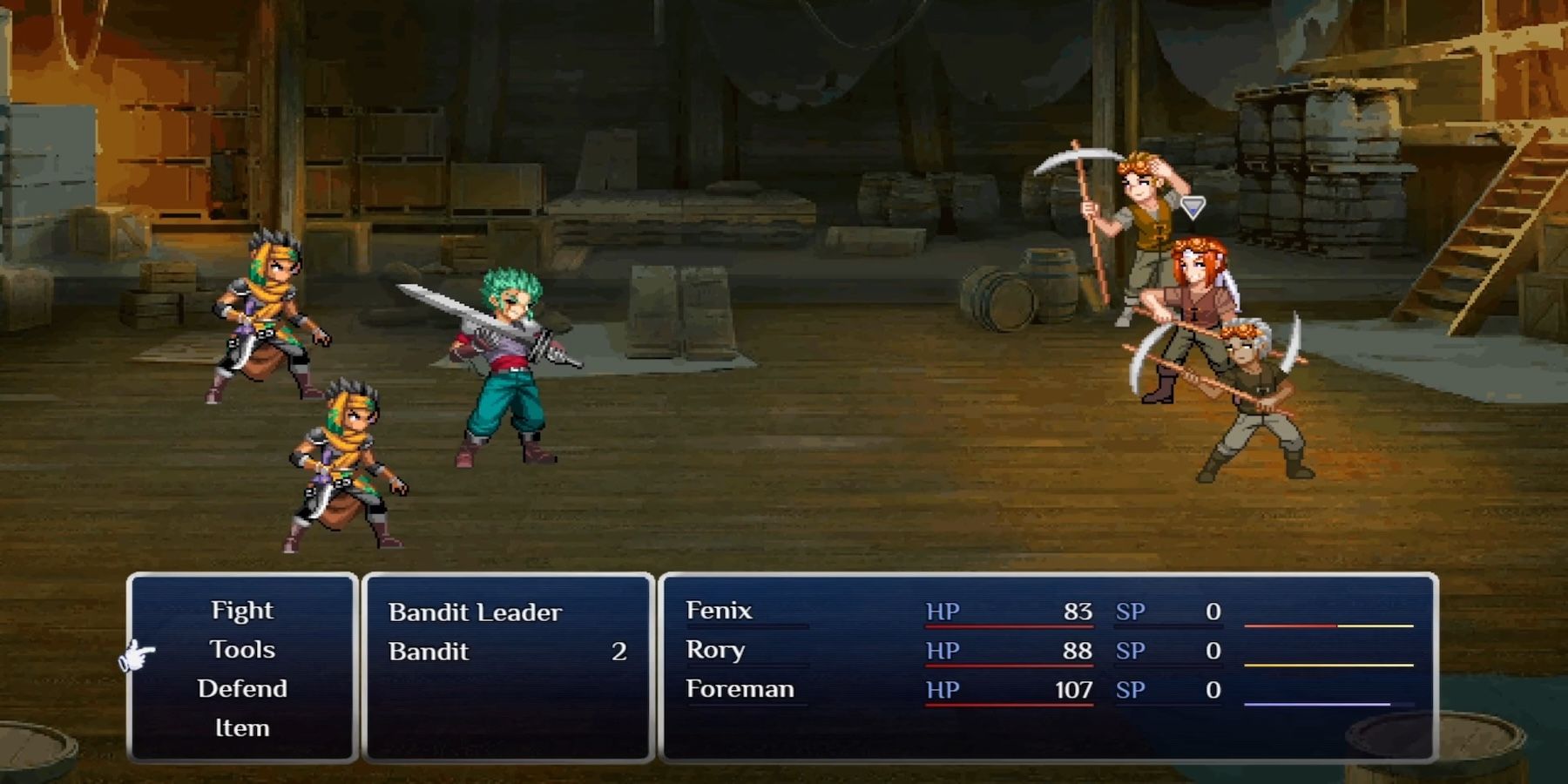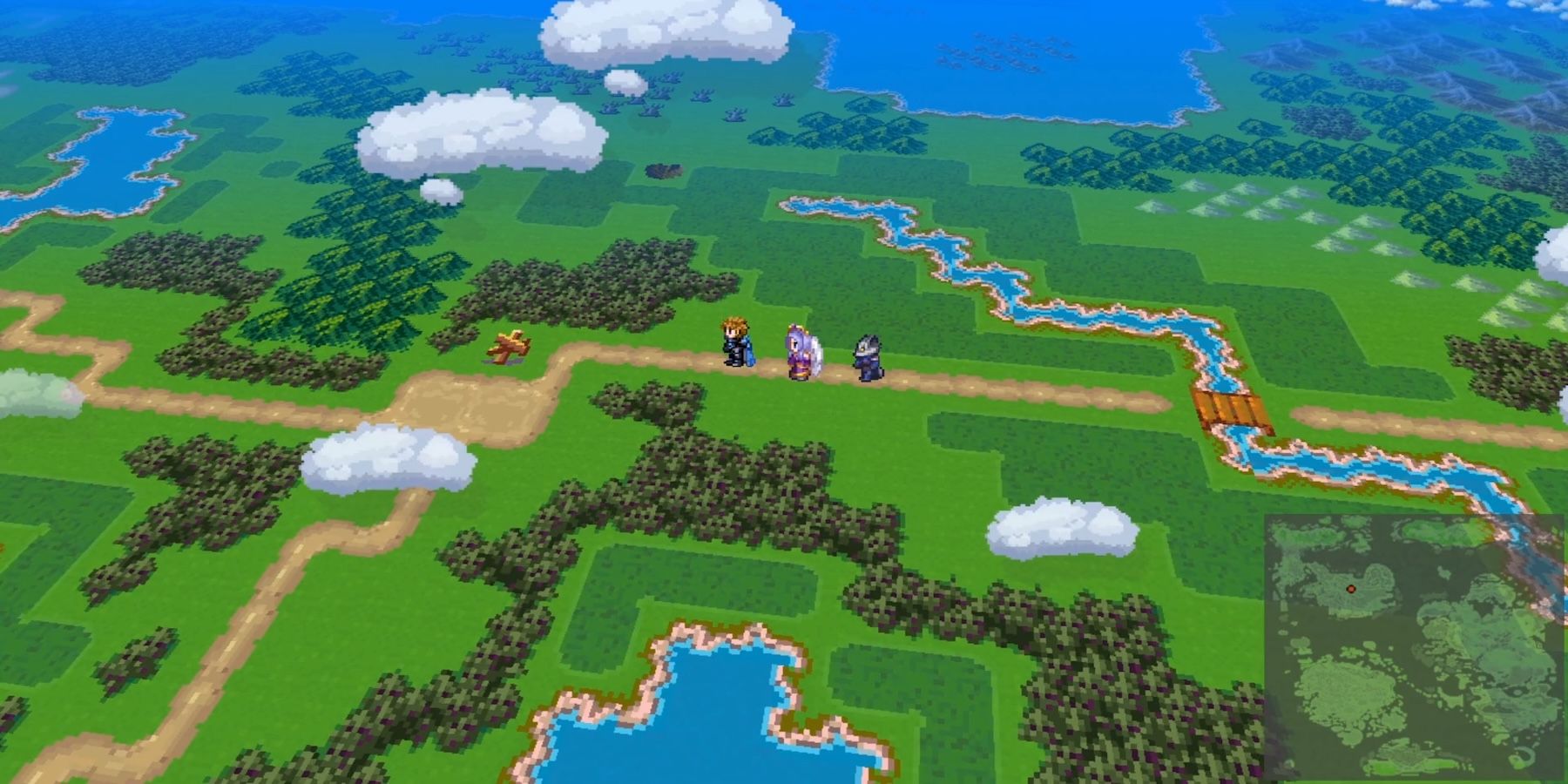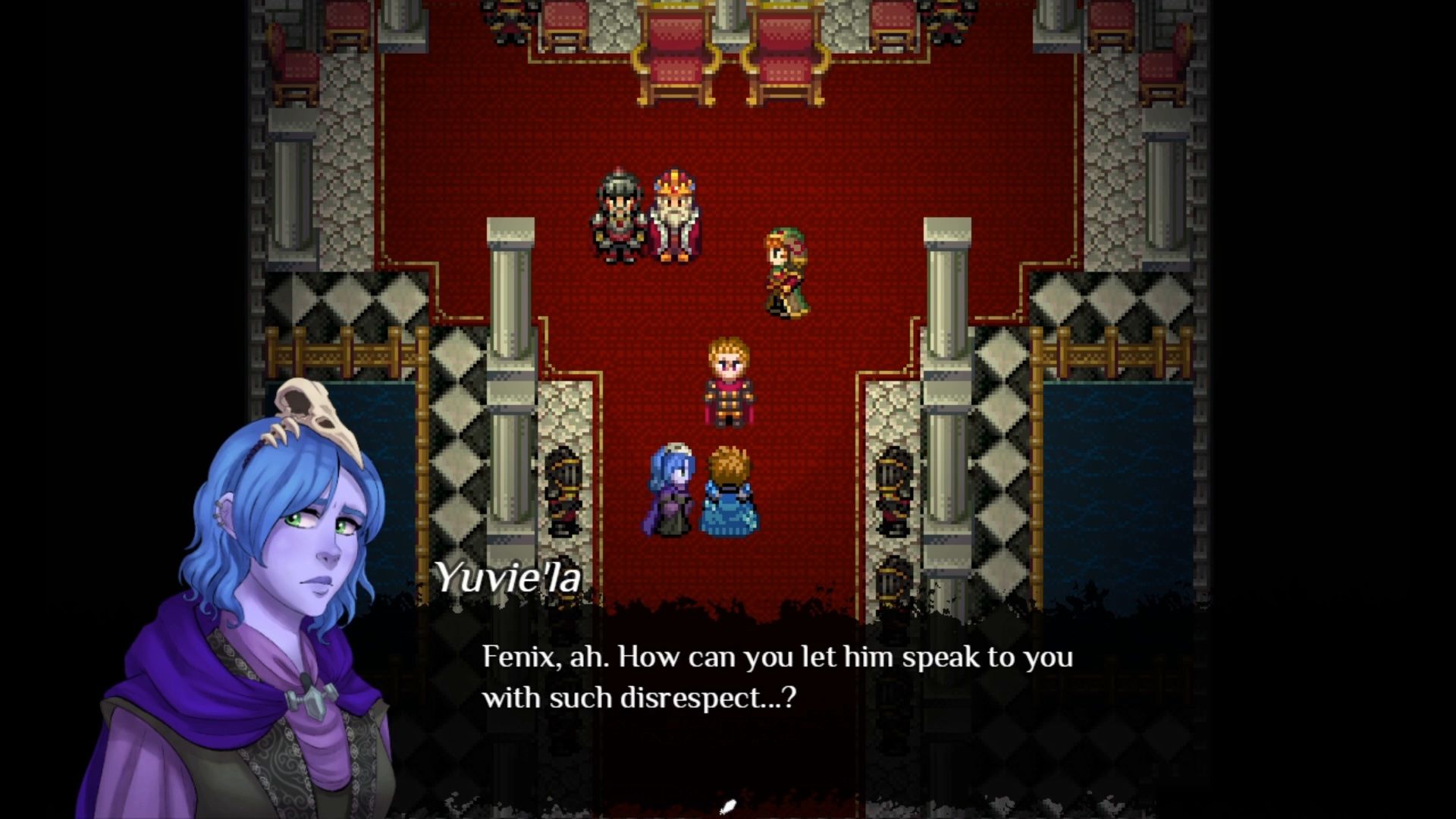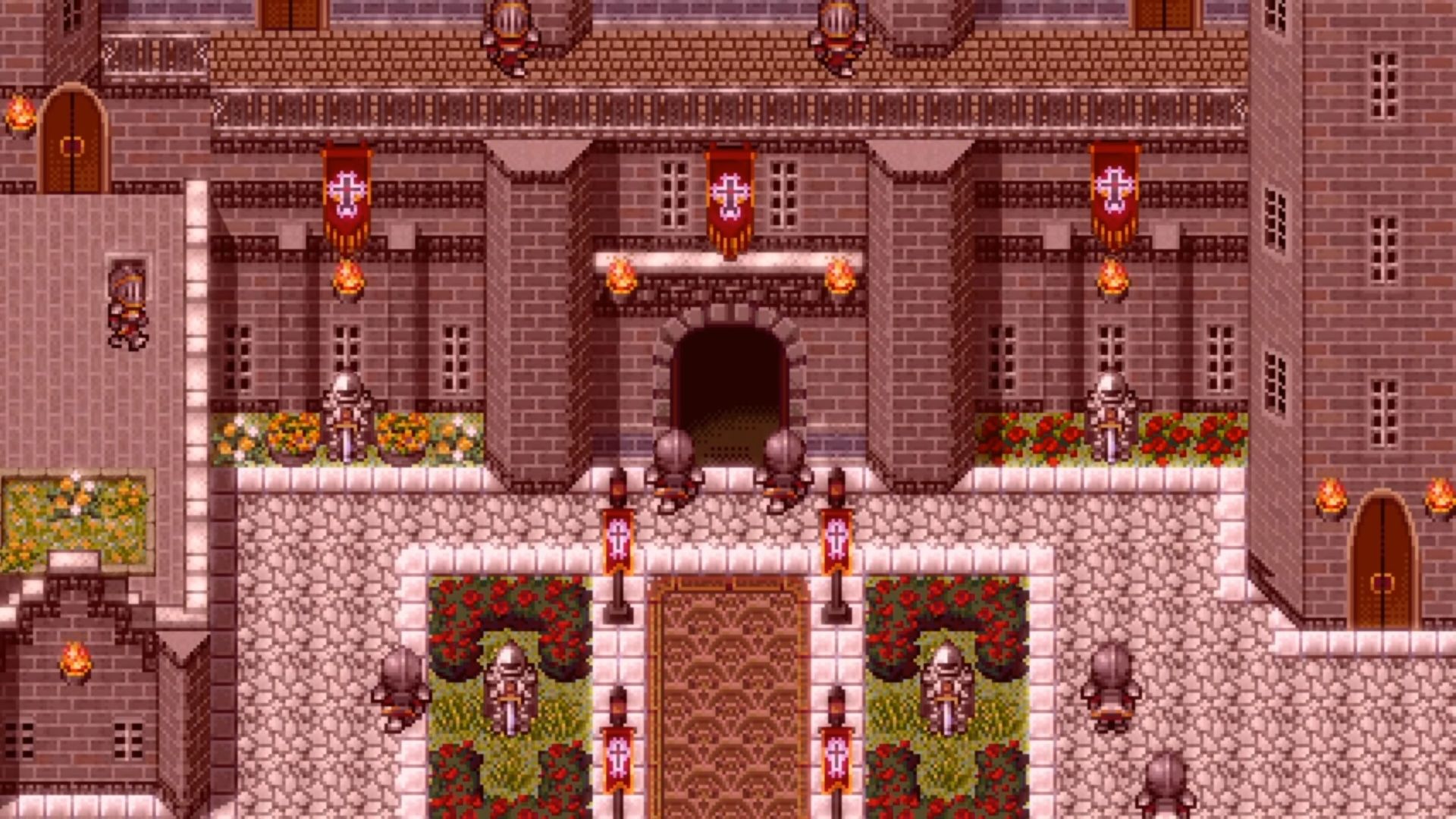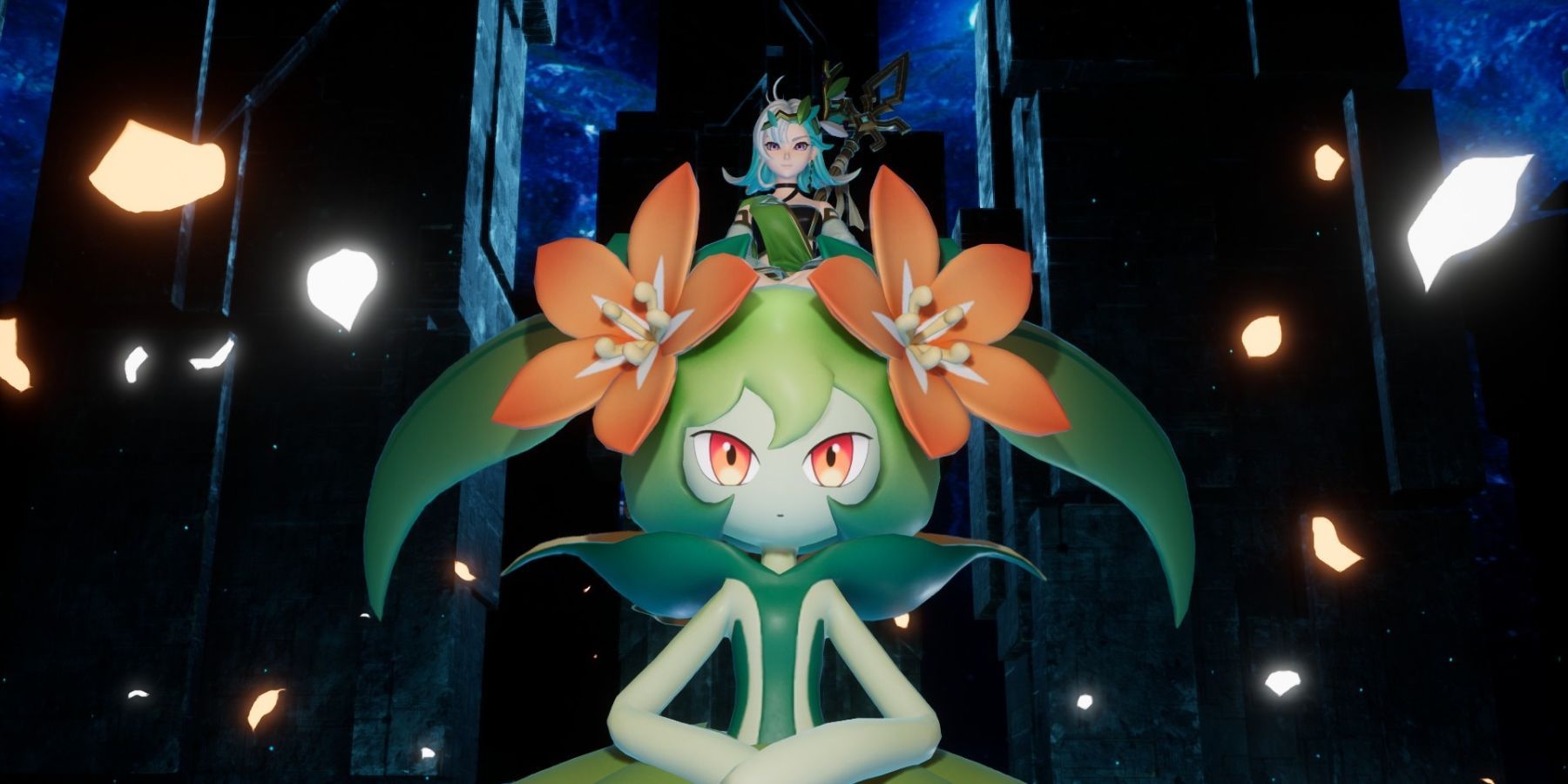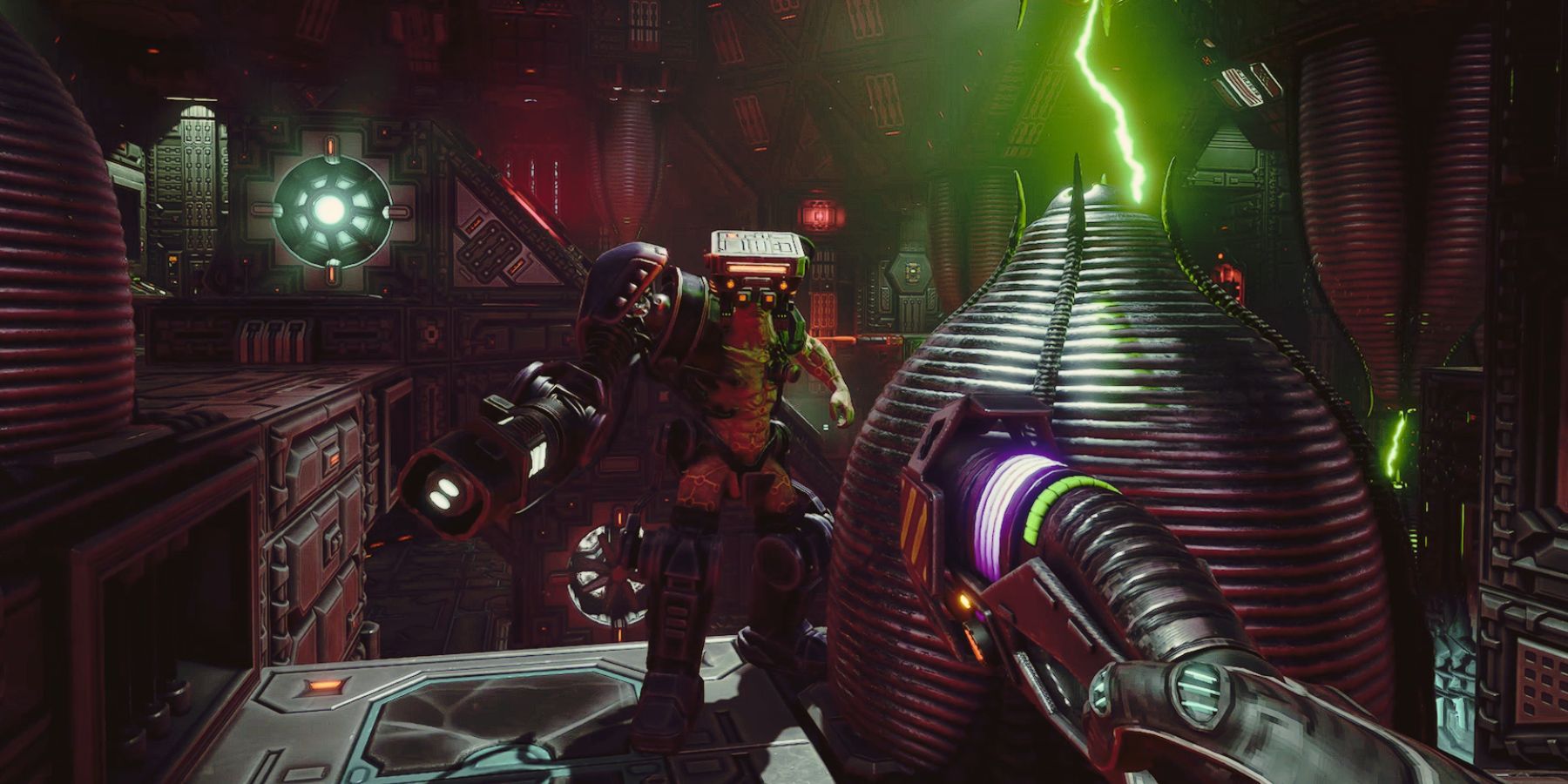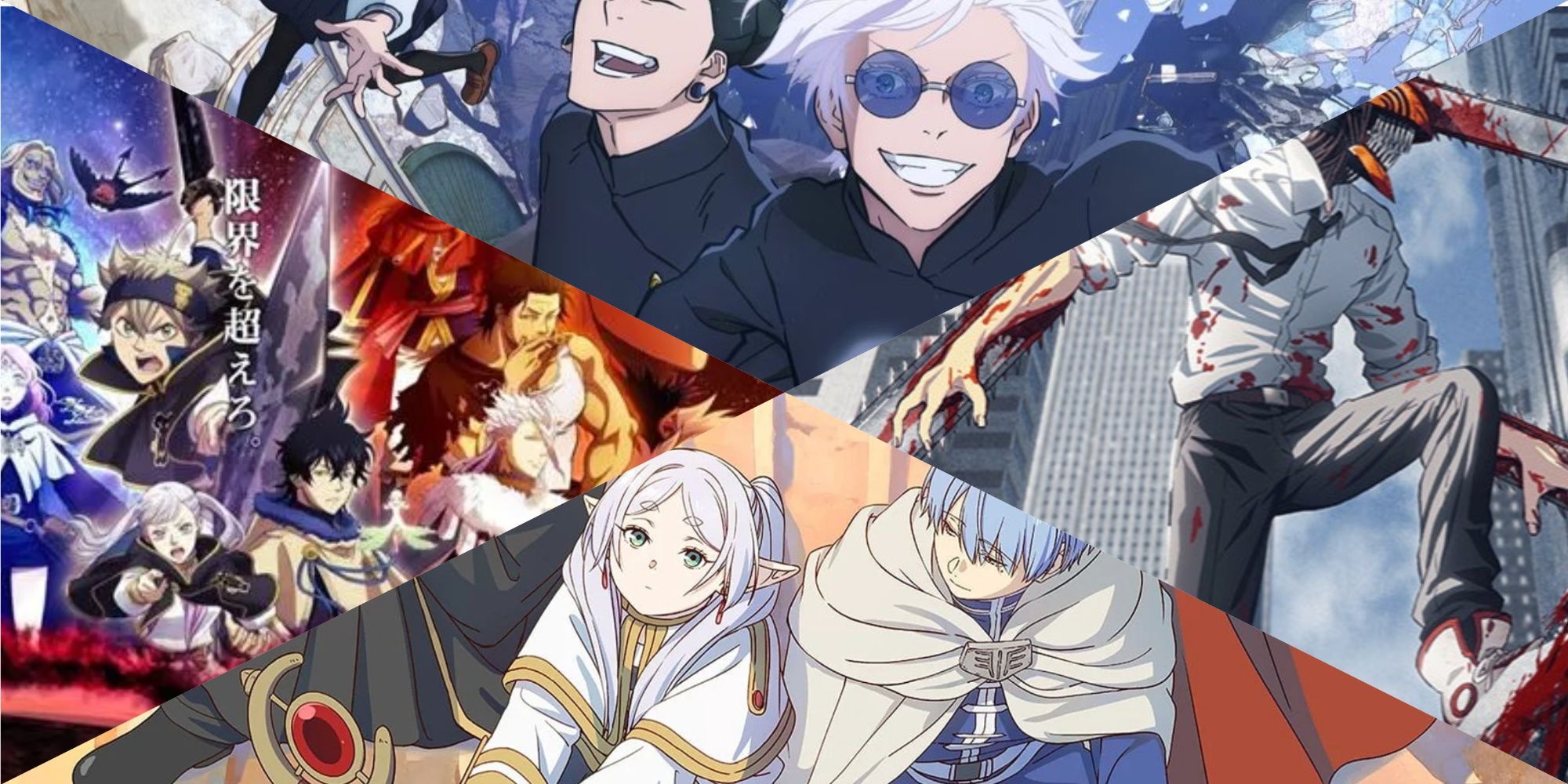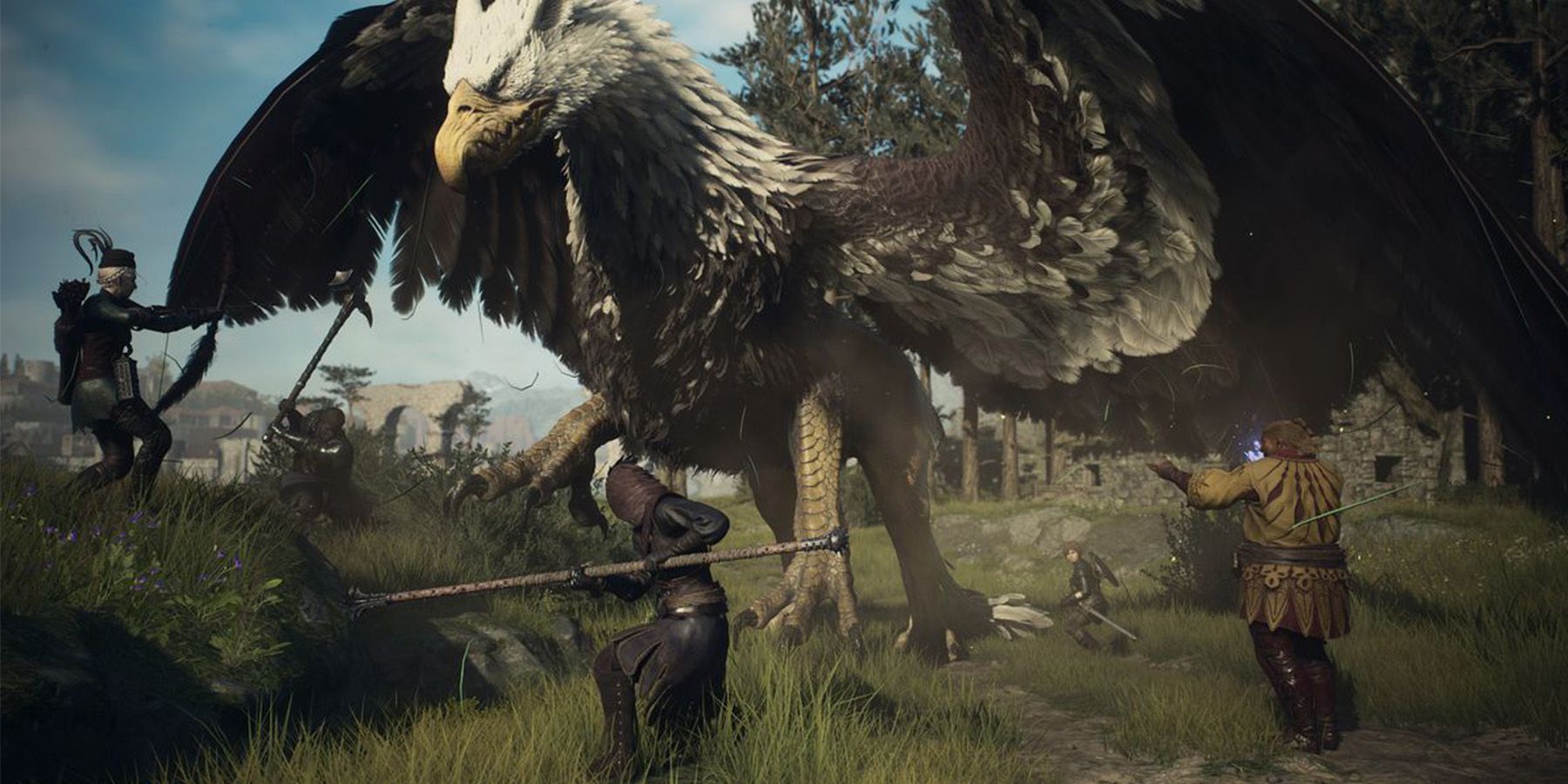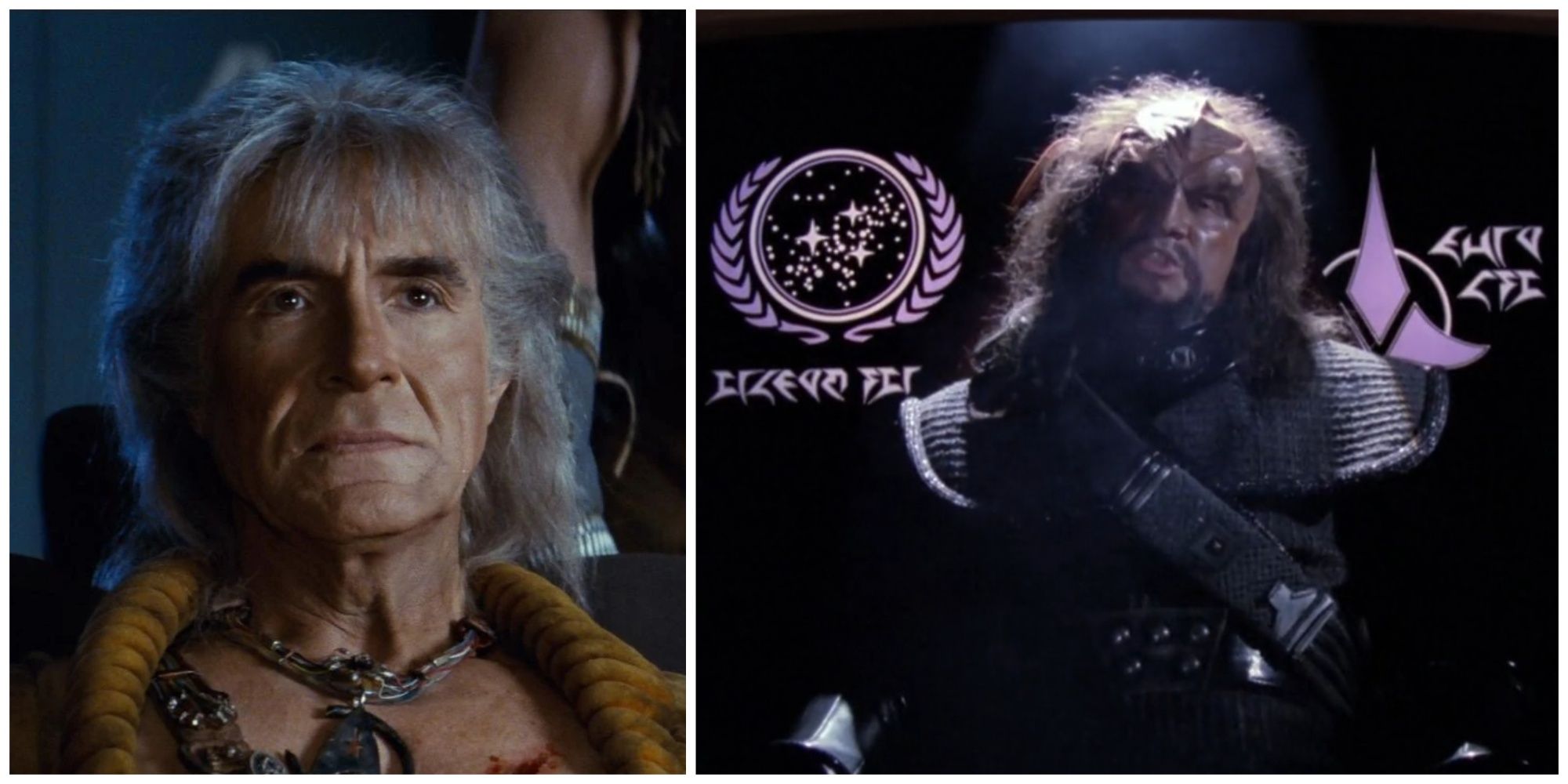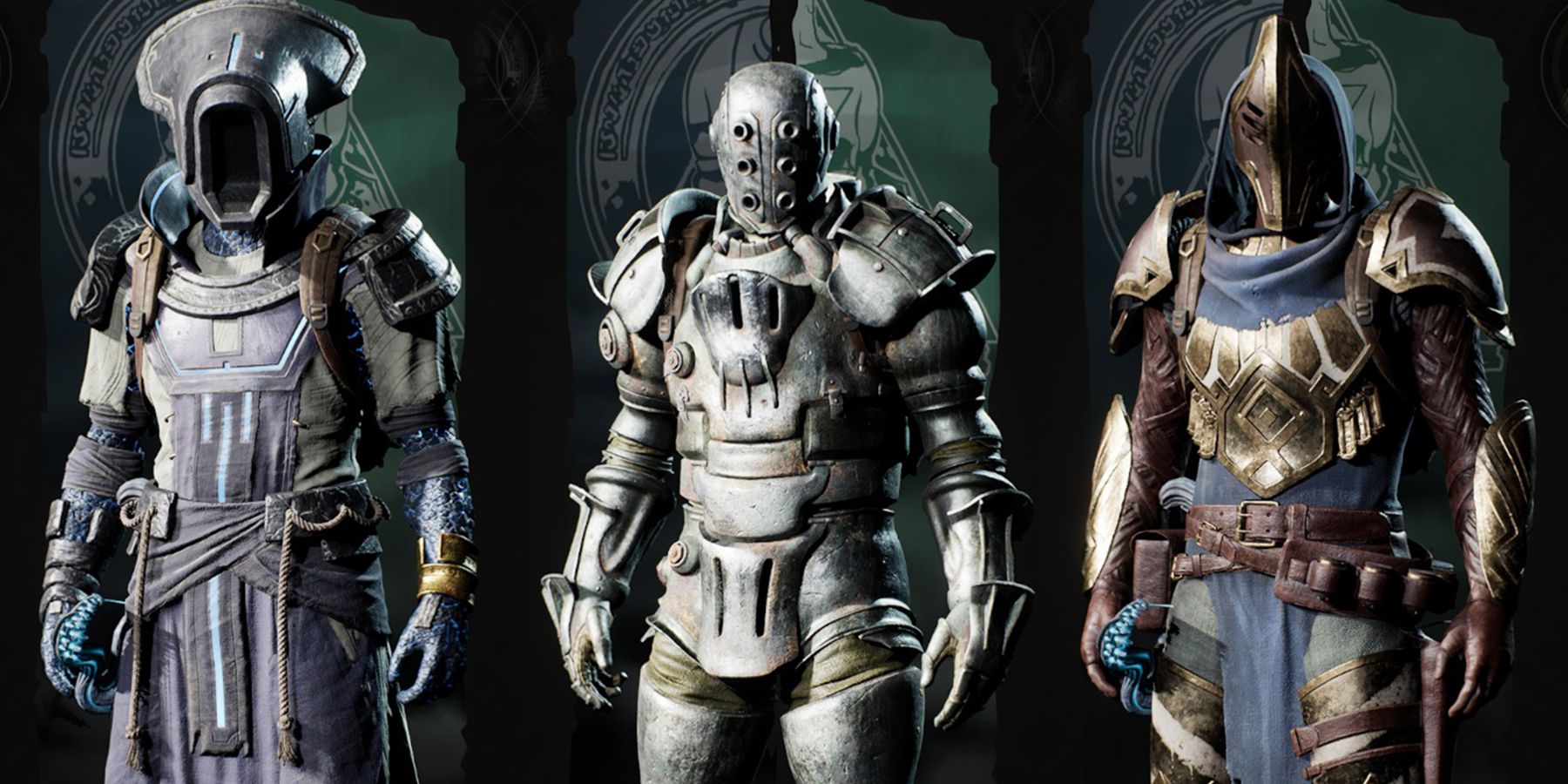One Fenix Down has been in development for the last eight years, and the passion project-turned 40-hour RPG is hopefully going to get a demo and Kickstarter launch in the early summer. One Fenix Down is a product of love and nostalgia for classic JRPGs like Final Fantasy and Dragon Quest, created by indie developer RC Dunn, who wants to offer linear gameplay with charming characters and a taste of the 1990s golden era of gaming.
Dunn told Game Rant in a recent interview that One Fenix Down offers new, modern options for JRPG lovers, but it’s something that’s still familiar to them, like “comfort food.” He described his approach to the combat design, which mimics the mechanics of those old JRPGs, mentioning that the game title itself is a nod to an old Final Fantasy detail. Dunn also explained that, while fate and destiny is a “very philosophical question” that he never intended to address, it is evident in some spots of the game, especially in the personality of main protagonist Fenix. The following transcript has been edited for clarity and brevity.
The Art and Development of One Fenix Down
Q: For our readers, can you tell us a bit about yourself and One Fenix Down?
Dunn: My name is RC Dunn. I work full-time and make games as a hobby. It’s been a learning experience for me because I started around 2015 as just something to do after work. I put together some RPGs, and I’ve been working on One Fenix Down now for about eight years. It’s really turned from a little side hobby into an actual full-fledged 40-hour RPG Adventure.
I would describe One Fenix Down as a retro-inspired classic turn-based RPG, and what that means is it’s basically designed from the start to feel a lot like the games that a lot of us played in the ’90s like Final Fantasy and Dragon Quest. Like them, it is a slower-paced, 2D grand epic adventure where you have your protagonist and some epic story about saving the world—maybe it’s a little generic story-wise—but I think it’s like comfort food. It’s a comfort game. A lot of people enjoy that sort of story and the characters that you can cherish.
Q: One of the first things that caught my attention, and probably others as well, is your art style in the game. I was immediately reminded of my favorite games from the ’90s. What influenced you to use this kind of art style?
Dunn: My biggest influences were those Final Fantasies, so Final Fantasy 4 and Final Fantasy 6. Those are the ones that got me into not just playing RPGs, but playing games in general. I really want to go back and do justice to that 16-bit graphical style and have a lot of pixel art in my game. When you’re running around the world, it’s 16-bit SNES-era-style graphics. When you get into combat, you have some really beautiful pixel art battlers that I got from a well-known Japanese artist. He’s making those and several other artists are working on the Pixel art enemy battlers.
To have that full cohesive style, I decided to stick with a comic book artist I’ve been using for a few years now. She’s been doing great work. What she does is hand-drawn high-res portraits of the characters. That was probably my toughest decision, but I decided to go with that because I felt like they were a little bit more expressive than the Pixel art portraits that I was using.
Q: How does the story of One Fenix Down and the art style complement one another?
Dunn: I feel like you need a bunch of different pillars when you’re making a game, right? Before I started making games, I was an aspiring novelist, and I was really focusing on writing, world-building, and character-building. When I turned to game-making, I found that there are several different pillars. It’s not just the writing and the stories, but there are the visuals, the audio, the programming, and of course, the gameplay. I feel like, for the most part, a lot of these pillars are very equal. You can’t have one without the other. To have a strong game, you need not only good characters for your RPG, but you also need good visuals as well. They all support each other and come together and make that unique vision, that unique game that I’m doing.
Story and Classes in One Fenix Down
Q: This is a story, an epic story about war, betrayal, and redemption. Can you talk about the story and world a little bit?
Dunn:One Fenix Down is a nod to the older Final Fantasies in the SNES era, where the Phoenix Down was a misspelled F-E-N-I-X, but One Fenix Down isn’t about phoenixes, it’s about a character, a guy named Fenix, F-E-N-I-X. [LAUGH]
After a bit of a prologue where you understand the events that the kingdom was going through seven years ago, you fast forward to following Fenix who’s the protagonist. He decided to work as a miner while the rest of this kingdom is off fighting these beastmen that are invading his kingdom. He’s gotten a lot of criticism for that decision, but he decided that he didn’t want to fight for reasons the players will find out. In the mines, he finds his secret power, this gift, that allows him to redeem himself in the eyes of his friends, his family, etc. That gift allows him to propel himself into these world events, these global conflicts, and actually make a difference in the world.
Q: These characters will have magic, can do martial arts, and also have monster abilities. Can you talk about some of the abilities that we’ll see?
Dunn: Speaking about Fenix in particular, since he’s the main protagonist, a lot of players will know him as a Blue Mage. He learns his abilities by being struck by enemy magic spells. Once he’s struck by those, his armor, which is made of basically gemstones, absorbs that, and he learns that ability. You have this main character who, throughout the game, gets stronger and stronger the more he battles and the more he gets hit by enemy abilities. That’s basically in his theme. It’s not blue magic. I call it gem magic because he’s a Gem Knight [LAUGH]. Then you have a bunch of other characters. You have the angelic seraphim-type characters who literally have wings. One joins you.
She casts a lot of holy magic, both healing and also offensive magic as well. You have a wide range of physical damage dealers. You have a ranger who can either be a strong archer-type character or he can equip a melee weapon and become a tank and a melee fighter. You have a thief who similarly depends on what weapon she has equipped. She has daggers or claws. She can deal a lot of damage, or she can stand in the back and shoot with crossbows and throw tricks at enemies and be more of a supportive character. That was my approach to this. I always thought it was interesting when games have flexibility, so you don’t have to play one character in one certain way. There are a lot of characters to choose from.
Q: You’re talking about some of these supportive characters or healers. What was your approach to combat design?
Dunn: I wanted to get away from what’s become very popular in RPGs and MMOs, which is that golden triangle or golden triad where you have the tank, the healer, and the damage dealer. Instead, how I’ve tried to balance it is thinking about it as a spectrum, so you have more of a supportive type and then more of a damaged dealing type. You have characters that can sway one way or the other. Supportive skills would be to draw attention or to heal or to cause status effects.
With damage, you have some characters who are just really good at dealing raw damage, but they might be what you consider a glass cannon so they go down relatively quickly. I wanted to steer away from what people might call HP sponges. It’s where enemies or monsters don’t do much except they just have a lot of HP, so it takes a long time to go through battles. I wanted it to be relatively quick if it’s a non-boss fight, being over within two or three turns max. Bosses will take longer, but assuming you’re not playing on the highest difficulty, they don’t take forever to beat.
The World and Lore of One Fenix Down
Q: I noticed that some of the characters are not all human. I saw there was a Wolf villain and a woman with purple skin. Could you talk a bit about the races and lore behind One Fenix Down?
Dunn: There are different races for sure. The most notable ones are the normal humans, and then you have what they call Beastmen. But Beastmen is almost a derogatory term that the humans call them; humans don’t actually call them by their actual races. The wolfmen are Lupumen. The dragon-type ones are called Dracokin. Then, you have Tigrismen, and you have the people up north who were inspired by Daft Punk and the anime Interstellar 5555, a race of bluish, tinted people. I really enjoy that album and that anime. I wanted to pay tribute to that. The people up north who live in a very snowy area, the tribe called Kung; they’re all bluish, almost greenish, tinted people.
The Seraphim is probably the last one where they look human, but then they also have wings. One joins you really early on, and they’re seen as a sign of reverence, because humans believe in this religion, and they’re the keepers of the religion.
Q: To clarify, Fenix is the son of the “fabled hero of Torloria”?
Dunn: I was cautious not to throw up too many names if I can avoid it [LAUGH].
But yeah, Torloria is the kingdom where you start. I’m trying to release a demo later where you can start to play the prologue, but I’ll have it in the main game as well. It’s just a quick 15-20 minute prologue where you see the Kingdom get invaded by the Beastmen. You have one character who’s the field marshal, and that’s Fenix’s father, Jan. They’re able to fend off the invaders and then hold them at that choke point for quite a long time, several years. What’s interesting is you find out that he’s the one who gets all the credit for that, but you’ll see the prologue characters are the true heroes that stop the invaders.
Q: There was a message that Fenix has to “protect fate.” What are you trying to communicate through this game about destiny or fate?
Dunn: That’s something that Fenix tries to figure out throughout the game. Because the spirits that bestow him this gift, this gem armor, and the abilities, they don’t give him a clear direction about what he’s supposed to do and what he’s supposed to protect; just their message that fades away is you must protect fate. He doesn’t really know what that means. You go throughout the story and part of his mission is to go throughout the world and find these other spirits that basically enhance his powers. They tell him the same thing, but they don’t really give a clear idea of what he’s supposed to do or what they mean. It’s not towards the end that you start to understand. Being careful of spoiler territory, I’ll just say that certain things go wrong, and they get a sense that the world’s heading in this direction. They choose him as a champion.
That’s interesting, and it’s relatable to everyday life. People go about their day and they don’t know what’s right or wrong, so I could only imagine with Fenix’s expectations how difficult that probably is for him.
Dunn: I think so. To talk a little bit more about your question on fate versus destiny, that’s a very philosophical question that I wasn’t intending to dive into, but I do think it’s a little present in the game because Fenix thinks he can shape his own destiny. He can choose his own fate. He sometimes questions if he made the right decision of not joining the Army because, in the key art, the one standing behind him is his twin brother. You have two characters who are polar opposites almost personality-wise and what they do with their lives. You’ll have Fenix question it, if he made the right choice, at some point. When he gets that gift, he realizes that, okay, now it’s potentially time to redeem myself and not have any regrets of not doing what I could have done in the past.
Q: You were talking about the other characters that help Fenix in his journey. Can you talk about how his relationships with these characters impact him?
Dunn: They impact him quite a bit. There’s a wide variety of characters. Some he doesn’t get along with initially, but they start to see that they have a common goal and start to get along with each other. One character that he gets along with fabulously is his best friend, Rory. Rory is another starting character. They’re both miners. When Fenix discovers this ability, Rory’s optimistic. He’s the “go get him” type of friend who always pushes you to see your better self.
Although Fenix on the surface acts like a goofball and things don’t bother him, he’s actually a very thoughtful and reflective individual and takes things personally, a little too personally. Rory’s the person who steers the ship in the correct direction. Like, “No Fenix, don’t think that, don’t worry about that. You know, you do you. I got your back.” Fenix is fortunate that he has all these supportive characters around him that help him when he’s in time of need. There’ll be certain events where he will really be pushed to that brink, and his friends, his family, are the ones who bring him back.
That’s the true meaning of the title, Fenix Down. He gets to a point where he’s literally at rock bottom, dealing with despair, and it’s really his friends that help him climb up and get out of that hole.
Q: This game was inspired by ’90s games and ’90s JRPG. How does a ’90s-theme video game fit in 2024?
Dunn: These days, we have these amazing productions and amazing games. I supposedly have such a huge backlog that I’m still working on: Final Fantasy 7 Remake and Legend of Zelda: Breath of the Wild. [LAUGH]
But to answer your question, I think a lot of games these days just try to throw so much content into them, and a lot of them aren’t taking a lot of risks like a lot of indie developers. Like, “Whatever, I’m just going to go all in and risk everything,” which is kind of fun with a lot of games. But for my game, I think how it fits in 2024 is it doesn’t try to throw the whole kitchen sink and everything into the game. There are going to be side quests, of course, but I think that the story is very linear and focused, and the style is very focused. It’s not going to ask you to build a town before you go save the princess. It’s more straight to the point while taking a few risks in the storyline, just to really wow and surprise the players. I think there’s going to be a niche of players who like the slower turn-based style that you got from ’90s RPGs.
Q: You mentioned that there’s a Steam demo that might be coming early this summer?
Dunn: Yeah, that’s my goal. I also have a small Kickstarter that I’m going to try doing. Originally, I was aiming for next month or maybe even June. I wanted to release the demo during that time because, as an unknown developer, I thought it was fair to show, “Hey, this is what the game looks like and feels like” and give a vertical slice of that. I’m trying to release it all around the same time frame. There are a few pieces that we’re trying to finish off like the finalized UI and some art assets, but as soon as those are done, I’ll probably kick that off. Yeah, early summer.
Q: And in the demo, what can players expect to experience in that?
Dunn: I mentioned earlier that, in the prologue of the game, you’ll get to see the events of when the Beastmen invade the Torloria Kingdom and you’ll get to play that briefly. I also take it a little bit earlier, so this part is canon to the story, but I won’t put it in the actual game. In that, you’ll actually get to play as one of the Beastmen, one of the Lupumen. He’s an observer. He sees that the kingdom is being attacked and taken by surprise and he decides selfishly that he’s going to help delay the attackers, but only because he wants to finish his own investigation of something that he’s looking into.
[END]
One Fenix Down is aiming for a Kickstarter and demo launch in early summer.


